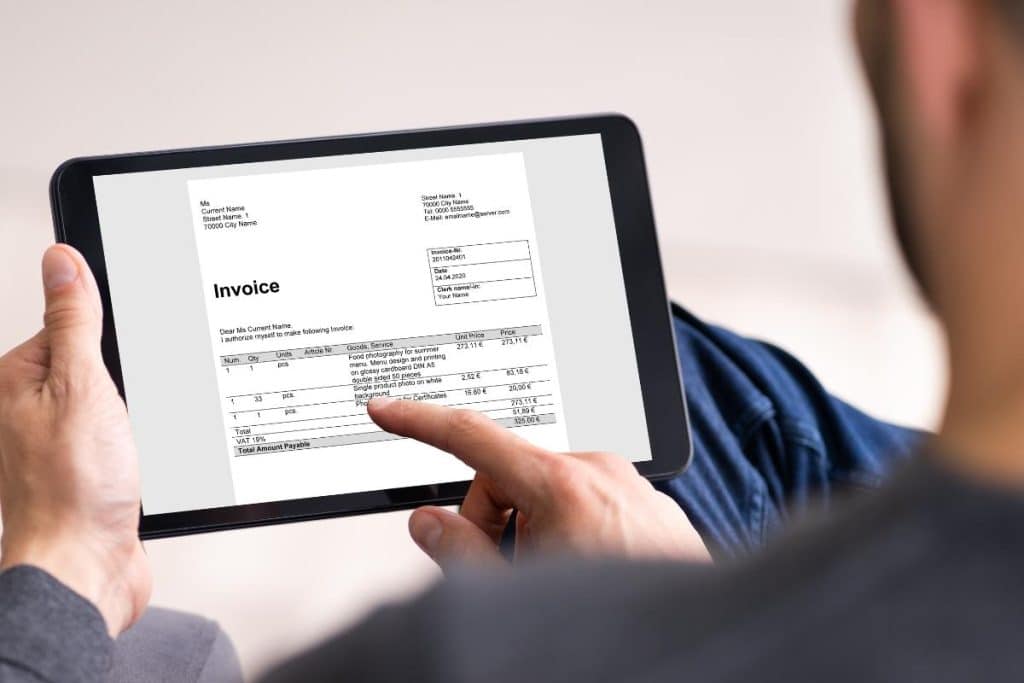The benefits of digitization spread to all departments in an organization, accounting included. In the accounting sector, it is practically impossible to stop using physical documents because of the legal constraints present. Regardless of how much you digitize your operations, it would be best if you considered finding a system to convert your printed invoices to digital data.
Optical character recognition is a tool all organizations looking to gain a competitive edge in the industry should implement in their operations. The tool scans images and converts them to digitally editable formats. Read on to learn more about OCR and how it helps streamline accounting.
What is OCR?
Optical character recognition involves using technology to identify printed or handwritten text characters in physical documents or images. The process involves scanning a text document and translating the characters to a code that can be used to process data and insights. In some regions, OCR is known as text recognition.
The system features a combination of software and hardware that helps convert physical documents into machine-executable characters. Your accounting department can take advantage of OCR to manipulate hard copy legal or historical documents to PDFs; then, they can edit and format the soft text.
What Are the Accounting Benefits of OCR?
Saves Time
OCR is among the many tools that guarantee to save you time in almost all your operations. In accounting, this function reduces the time spent by your workforce on paperwork by simplifying manual data entry. Your employees can easily convert physical documents to digital formats, plus the extraction is faster.
According to a recent study, OCR reduces the time dedicated to paperwork accounting by 75%. Not only does it save time, but it reduces the workload on data related to accounting aspects.
Improves Accuracy
The software used in optical character recognition mitigates the exposure to human error, improving accuracy in accounting data. Its software includes an intuitive in-built algorithm that helps analyze and extract information with peak accuracy. And since accounting is all about getting your numbers right, even the slightest error can lead to dreadful results in the department and overall organization.
Promotes a Green Environment
Living green enthusiasts associate many of the Earth’s problems with paper production and use. Because of this, it is a goal for most organizations to go paperless. Optical character recognition promotes the go-green movement by allowing you to digitally handle all your physical documents.
By implementing OCR in your operations, you reduce your use of paper products and contribute to saving the environment. You will reduce how much paper you use to store, print, photocopy, or process accounting information.
Increases Employee Morale
Accounting employees dread dealing with paperwork, meaning that reducing paper workload will guarantee them high spirits. Optical character recognition helps your employees escape some of the tedious and time-consuming paperwork, allowing them to focus their energy on other functions. Adopting OCR can cut all the ‘boring’ paperwork for your accounting professionals.
Streamlines Payment Processing
Regarding processing payments, OCR systems help handle and manipulate all structured documents more accurately and effectively. It works to automate critical accounting tasks by deciphering the data found on documents with static layouts.
Automating accounts receivable and check processing are the most common ways organizations implement OCR. It allows your employees to avoid all the hassles related to manual data entry and traditional paper routing.
Better Auditing
Optical character recognition also has a positive effect on your business auditing process. The tool helps accountants avoid reports that look to add fraudulent charges to the business’s expenses. Your auditors will have an easier time conducting searches in the documents and budget reports while allowing them to perform a more profound and faster turnover. Instead of collating and reporting one copy at a time, they can quickly and more effectively analyze all the transaction details.
Where to Use OCR
Copy-paste Documents
One everyday use of optical character recognition is converting a scanned file and allowing users to copy-paste the data as text on a clipboard. The tool provides a digital backup for printed materials without encoding and typing the data into a computer. Organizations spend considerable resources on converting their information to digital formats despite the possibility of human errors.
Voucher Code Scanning
Promotion vouchers are slowly becoming popular in the business community as every organization looks to increase its consumer base. There is a new and digitized approach to providing promotions apart from conventional printed forms, loyalty stamps, and newspaper coupons. The OCR tool helps automate scannable mobile-ready codes to help in your business campaigns and product promotions.
Office Filing
OCR reduces an organization’s dependence on paper materials by providing a digitized approach to most internal functions. The tool helps scan physical documents and convert them into soft copies that can be edited and manipulated. The result is a machine-readable file that supports any text search, from name to phrase and keywords. Password protection is also a feature that should motivate you to implement OCR and reduce space-consuming filing cabinets.
Assisting the Blind
The visually impaired are a minority when it comes to accounting. However, by implementing optical character recognition, you provide a friendlier accounting environment for the blind. Specific features in the OCR system like text-to-speech and data extraction automation allow them to function in an office and contribute to the organization’s goals.
How Can OCR Increase ERP Efficiency?
Optical character recognition is a tool that automatically reads and extracts texts from any document type. The tool closely relates to your ERP since most business documents are managed under the function. If you implement OCR in your ERP, you are provided with a system that can automatically extract the relevant data from the documents handled.
Not all companies have implemented OCR. ERP handles all the digitization processes for these organizations, but data entry is manual. Accountants are responsible for receiving financial documents and typing each as they are recorded. Although recording an invoice takes a few minutes, doing it for a hundred invoices will take a lot of time, which is why you need to implement OCR.
Conclusion
GoldFinch ERP harnesses the power of OCR, especially when paired with Xledger and Salesforce. To learn how to leverage OCR in your business, contact us today.



